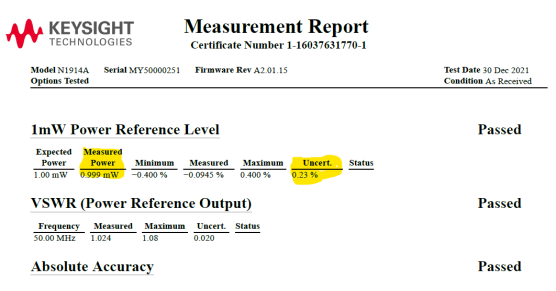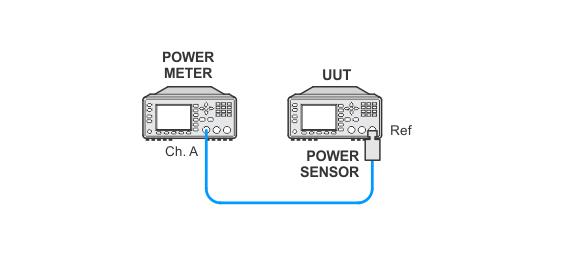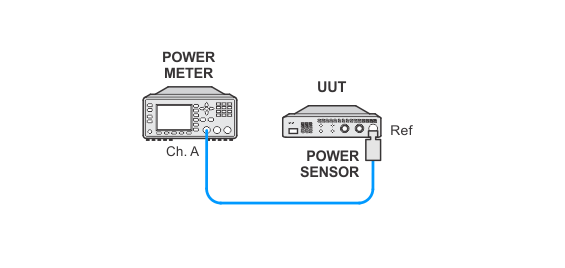
|
|
The 1mW Power Reference is used for the calibration of 8480 Series & E-Series power sensors, and is traceable to national standards.
This test uses an N8482A power sensor to transfer the power measured on an accurately calibrated power meter to the DUT reference.
Although allowed as alternative models, E4419A and E4419B power meters are not recommended as test equipment for this test due to higher than desired maximum measurement uncertainty which may cause failures.
Prior to running the 1 mW Power Reference Level Performance Test and 1 mW Power Reference Adjustment, you are required to enter the 1 mW reference output power and the calibration uncertainty of the power meter used as the test equipment in the performance test and adjustment mentioned. This calibration information is required rather than the default information to be able to proceed with this test and adjustment.
Below is a sample of a measurement report from a Keysight lab. Note that these are sample values and reports may look different from calibration labs other than Keysight.

When the 1 mW Power Reference Level test and adjustment starts, TME will show the Enter Calibration Information dialog. Enter the reference output power and uncertainty values from the report into the dialog.

1 mW Power Reference Adjustment
|
Test Equipment |
Recommended Model Number1 |
|
Power Meter2 |
N1914B |
|
Power Sensor |
N8482A |
|
|
|
Connections on power meters with rear panel options will differ than those in the illustrations below. Refer to the rear panel of the power meter for connector identification labels. |



